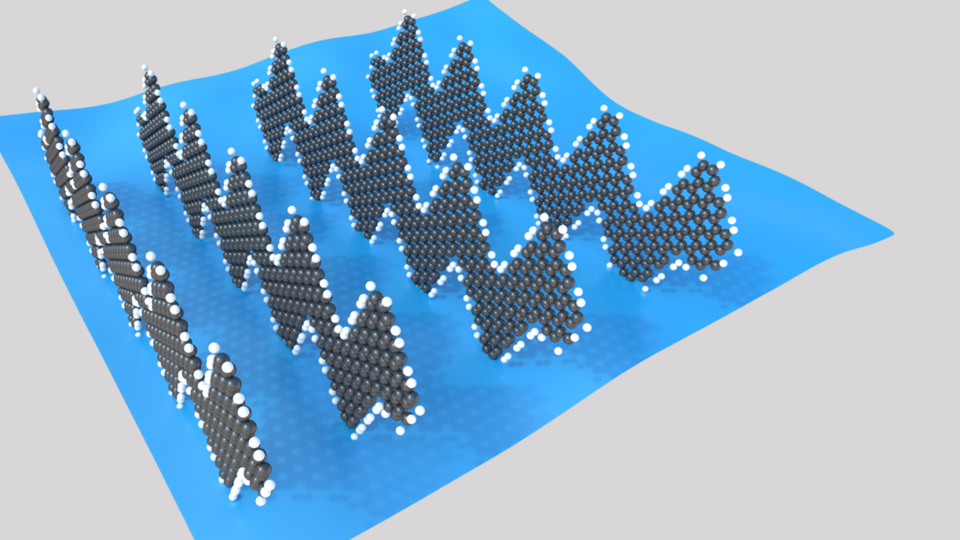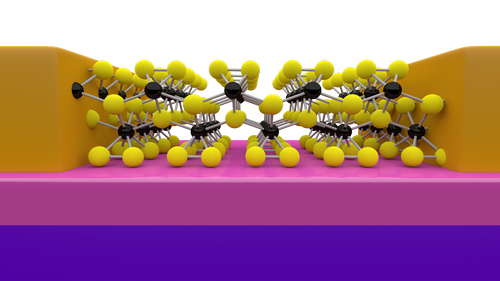Nanoribbon Gas Sensors
New graphene nanoribbons were synthesized and used for fabrication of gas sensors that responded about 100 times more sensitively to molecules than did sensors featuring even the best-performing carbon-based materials.
Furthermore, the ribbons were integrated in an electronic nose system that could differentiate between molecules of nearly the same chemical nature, such as methonol and ethanol.
TiS3, a new 2D material
One completed a series of theoretical calculations to predict its properties with the help of a massive computing center. The other grew it in bulk before waxing its atom-thin whiskers with the assistance of adhesive tape.
Together, University of Nebraska-Lincoln chemists Xiao Cheng Zeng and Alexander Sinitskii have demonstrated that a compound called titanium trisulfide could surge toward the fore of two-dimensional materials that are gaining popularity among designers of microelectronics.
Ferroelectric Memories
The improvements in random access memory that have driven many advances of the digital age owe much to the innovative application of physics and chemistry at the atomic scale.
The researchers became the first to design a ferroelectric junction with electrodes made of graphene, a carbon material only one atom thick.



